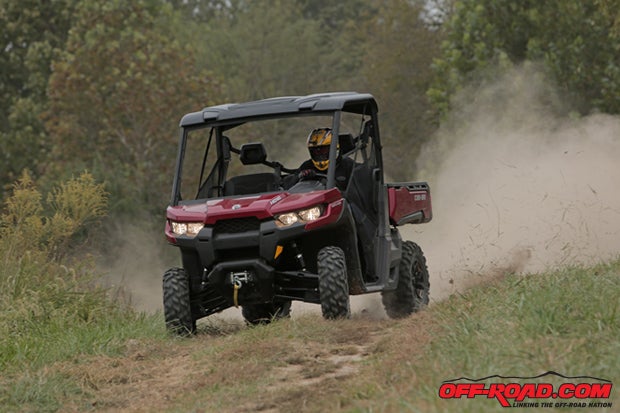
When you consider that utility-recreation vehicles make up nearly 50 percent of the entire side-by-side market, itís a head scratching fact that Can-Am hasnít offered a utility-focused side-by-side until the launch of its new 2016 Defender.
The answer for this, however, is surprisingly simple: Can-Am didnít want to be an ďalso ran.Ē They wanted to make a strong statement with a new vehicle that truly improves upon whatís already offered.
Get the Flash Player to see this player. |
ďWe didnít want to introduce a Ďme tooí utility vehicle,Ē said Can-Am Director of Global Marketing Philippe Normand. ďWe wanted to produce something that features Can-Amís signature clever and thoughtful design in a vehicle that improves what is currently available.Ē
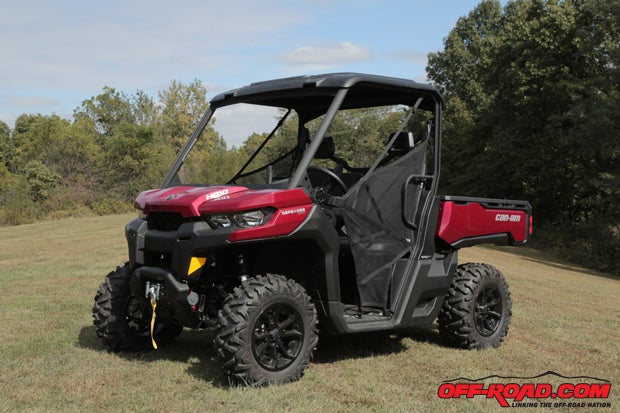
Can-Am identifies the main Defender buyer as farmers, ranchers and large estate owners, and so the company went out during the past few years and visited them, compiling a wealth of valuable research information that went into the development of the Defender. The foundation of the Defender was based on three pillars: focus on simplicity by offering useful features that truly serve a function and arenít just gimmicky gadgets; reliability, because this vehicle canít break down in a remote location or in the middle of a job; and durability, since the Defender is a workhorse designed to tackle jobs that sport-minded vehicles canít.
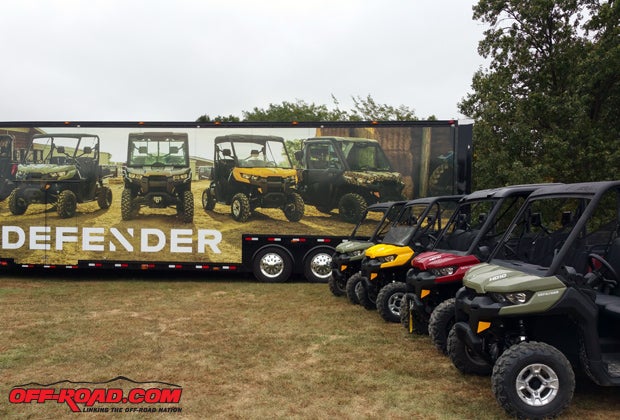
During our press introduction at Harpoleís Heartland Lodge in Nebo, Illinois, a large chunk of privately owned land that offers ATV and side-by-side trails as well as hunting options, trap shooting and more, Can-Am provided the media with its first riding impressions of the Defender while also outlining its strategy to aggressively expand its reach in the market. Can-Am says it will offer a new model every six months for the next four years. The Defender really is the kickoff to Can-Amís grand new plan, and itís really no surprise the company is putting its first foot forward with a vehicle that has serious mass appeal.
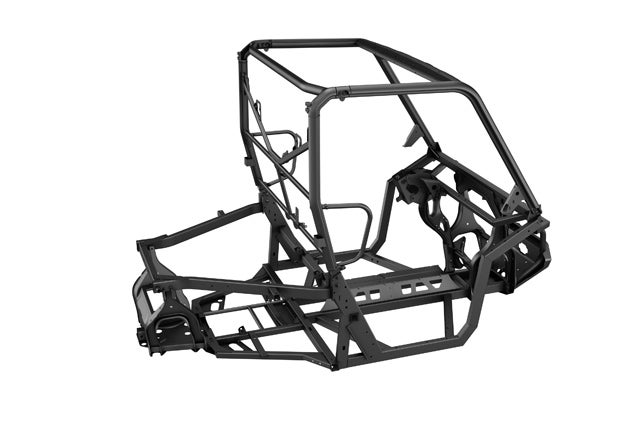
The Defenderís DNA
Creating a strong utility side-by-side begins with the chassis. Can-Am constructs the new Defenderís chassis with high-strength, low-allow (HSLA) grade steel that features an automotive-influenced design similar to those used on modern pickup trucks. The fully welded frameís rigid design is intended to take serious abuse, regardless of if itís trail abuse or tackling the most demanding work jobs.
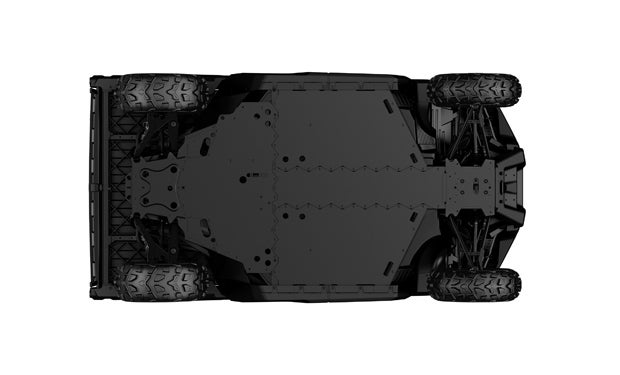
Underneath the Defender, Can-Am fitted it with plenty of trail or job site defense in the form of a central skid plate as well as an integrated steel front bumper up front. Showing attention to detail, careful attention was paid to the front bumper, as it features dual protective anti-corrosion coating both on its exterior and interior to prevent rust and corrosion.
After the work is done, the Defender is ready to tackle the trails for fun or for the next hunt, thanks to double A-arm front suspension with twin-tube gas-charged shocks that provide 10 inches of travel. Out back, Can-Am equipped with Defender with its exclusive TTA-HD rear suspension with an external sway bar, which is fitted with a twin-tube gas-charged shock that also offered 10 inches of travel. Can-Am says the TTA-HD rear suspension provides great control since it has vey little change in camber. Can-Am engineers also took careful note to provide ideal weight distribution for the Defender for ideal handling and capacity, with 44 percent of the weight up front and 56 percent in back. Overall, the Defender offers 11 inches of ground clearance. Can-Am also hails its very tight turning radius, making trail navigation or maneuvering around the jobsite easier.
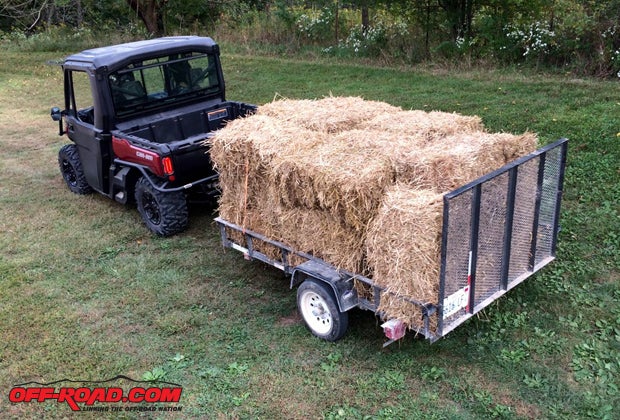
With work being a primary focus, Can-Am was certain to produce a vehicle with impressive capacity. The Defender can tow up to 2,000 pounds via its 2-inch receiver. The Cargo Box will haul up to 1,000 pounds, though the California model is limited to a 600-pound capacity, and the Defender has an overall payload of 1,500 pounds. Even the tailgate is designed with abuse in mind, as it features a 250-pound capacity and feature incorporated cup holders for break time.
The ease of getting into out of the Defender was a key focus for design engineers, and therefor Can-Am pushed the A-pillar forward on it to make entry and exit far easier. Inside the cabin, the Defender features a 40-20-40 split bench seat with enough room for three full-sized adults, which is a comfortable ride for all three provided they arenít all plus-sized. The seat features a vinyl cover for durability, and the bench lifts up to provide more storage space if needed, or if the under-seat storage compartment needs to be accessed (a standard feature on the XT).
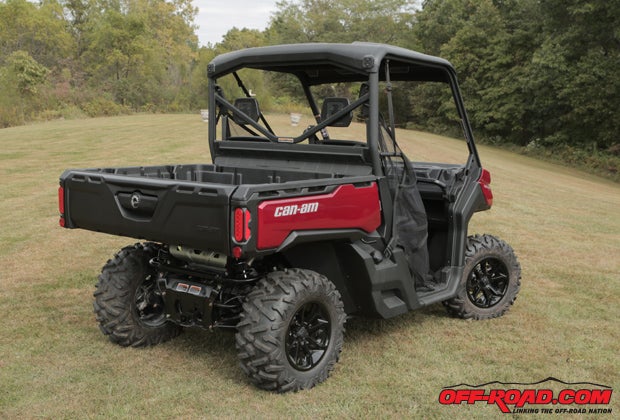
The cargo box features numerous anchor and tie-down points, as well as 14 quick-attach locations for Can-Amís LinQ system to install a variety of accessories. It also features 1x3 and plywood bed separators along with four 5-gallon pail recesses. The bed tilts to easily unload cargo thanks to a manual lever on each side, but a Power Tilt-Bed option is also available that is controlled by an integrated dash lever.
The Defender features three driving modes to customize its performance for the task at hand. Each mode is selected via a rocker switch in the console, providing settings for Work, Normal Riding and Eco (the most fuel efficient) with each setting offering a different level of throttle adjustment for the driver. The vehicle also offers four different settings for its traction system, including 2x4 and 4x4, and the choice between keeping the rear differential open or locked. Stopping power is provided via four-corner 220mm disk brakes.
The Defender also features a 10.6-gallon fuel tank for a long range, good visibility thanks to a 140-watt lighting system, and plenty of available power thanks to a 650-watt magneto to power accessories.
The Defender is available in the standard model, as a DPS model (upgrade cast-aluminum wheels, Visco-Lok QE, power steering), XT model (4,500-lb. winch, 27-inch Maxxis Bighorn tires, 14-inch cast-aluminum wheels and more), and a Defender XT Cab model (full hard roof w/liner, full glass tilt-up windshield, full doors with electronic windows, rear glass window, heater kit). Colors vary from model to model, though the DPS, XT and XT Cab are all available in a camouflage version thanks to Can-Amís partnership with Mossy Oak.

Riding Impression
With miles and miles of trails available at Heartland Lodgeís ATV/UTV trail system, just about all of the journalists in our press group piled into vehicles and heading straight the fun stuff, but we had work to do and wanted to test the towing and hauling capabilities of Can-Amís new workhorse.
We started off the morning by loading the cargo bed with nearly 1,000 pounds of corn feed. With a full load, the rear of the Defender was certainly weighted down a bit but the suspension was fit to handle the job. We selected ďworkĒ mode and fired the engine to life. The HD10ís torque offers plenty of low-end grunt for our hefty payload, and we were pleased with the slow-speed handling of the Defender in spite of the added weight.
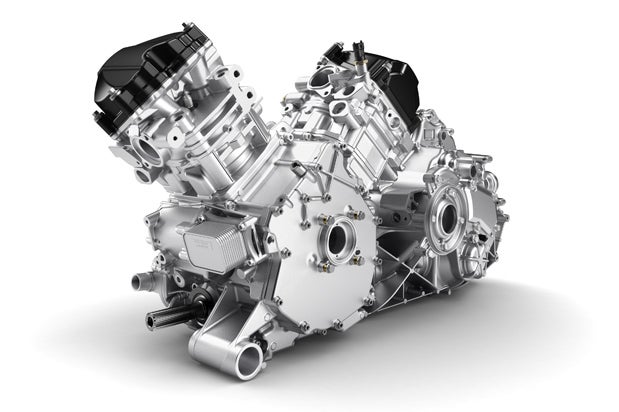
After unloading the corn feed bags we headed over to a trailer loaded with hay bails and additional weight to get near the 2,000-pound towing capacity of the Defender. The low-end pull from the HD10 twin got us moving without any sign of struggle. The Defender still maintained its straight-line tracking with the trailer in tow, and the added trailer never detoured the Defender even as we u-turned, pulled onto grassy areas and up and down a few small hilly sections.
With work out of the way, it was time to hit the trails. The Defender is definitely fun and capable in the dirt and mud, with the 10 inches of suspension travel and 11 inches of ground clearance offering a good combination to get through deep ruts, over downed logs and up trails with even the most deepest ruts in the park. The steering of the Defender isnít what we would call taut, as thereís quite a bit of play in the wheel that might bother the more sport-minded riders. Even though the steering isnít the most responsive, the Defender does handle predictably and feels relatively nimble for a utility side-by-side, even in more fast-paced wooded trails where a wrong turn can mean clipping a tree.

The front bench seat is utilitarian but still comfortable, and weíre happy to see the 40-20-40 sections flip up with ease. The under-the-seat storage thatís standard on the XT model is a nice addition and, like the dash-mounted toolbox, it can be removed from the vehicle and taken with you. The pushed-forward A-pillar of the Defender is a nice design touch, as we never once bumped our head or helmet on the bars when entering and exiting the UTV.
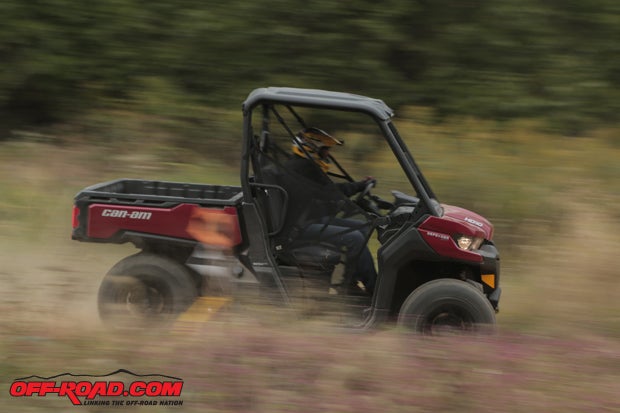
Final Thoughts
The Defender aims to blend the worlds of work and play, and we feel it accomplishes that mission. On the work front, it is very capable and well equipped to handle the wide variety of jobs for a variety of different applications. On the fun side, the Defender is still playful enough to zip around on the trails even if it wonít be mistaken for a sporty UTV.
Most importantly, Can-Amís Defender fills a giant hole in the companyís side-by-side offerings. The Defender is great utility side-by-side that will give the segment leading Polaris Ranger 900 a new contender to deal with. With thoughtfully crafted standard features, a plethora of customizable accessories and a starting price of $10,999 ($12,799 for the dyanamic power steering model), we think the Defender truly brings something new to the recreation-utility market.


 Your Privacy Choices
Your Privacy Choices